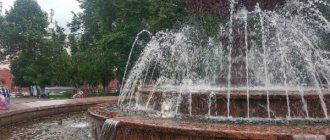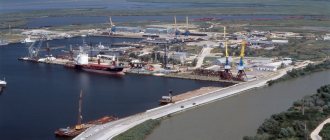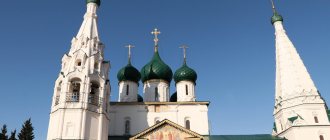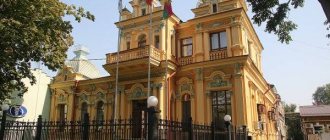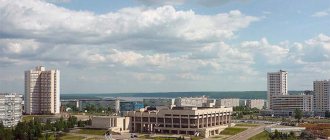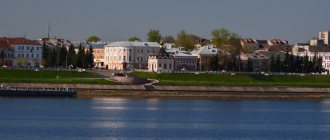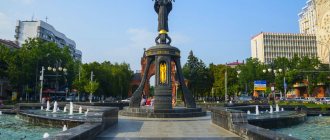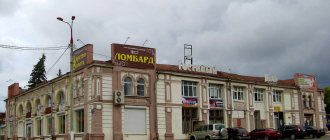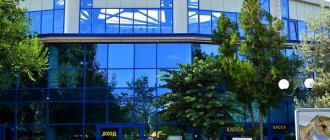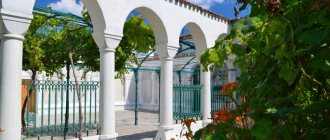About Gubkin
Gubkin is located on the Oskolets River, 20 kilometers from Stary Oskol and 116 km from Belgorod.
The city of miners is one of the stable regions of the Central Federal District and was formed in 1939. The Gubkinsky urban district includes Arkhangelsk, Bobrovodvorskaya, Bogoslovskaya, Vislodubravskaya, Ivanovskaya, Istobnyanskaya, Konshinskaya, Melavskaya, Nikanorovskaya, Oskoletskaya, Saprykinskaya, Sergievskaya, Skorodnyanskaya, Teplokolodezyanskaya, Tolstyanskaya, Troitskaya, Ukolovskaya, Chuevskaya and Yuryevskaya territories.
General view of the city
- City area: 42 km²
- City population: 87,405 people
- Gubkin city coordinates: 51°17′00″ north latitude, 37°33′00″ east longitude
- Climate: temperate continental
- Time zone: GMT +3 (Moscow time)
- City code: 47241
Favorable geographical location and land resources contribute to the active economic development of the territory. In the last two decades, Gubkin has grown rapidly and moved forward. Today, there are industrial and agricultural enterprises in the district: Lebedinsky GOK (part of), the KMAruda plant, KMArudstroy, the Gubkinsky meat processing plant, the Khlebny Dom and AvtoDor enterprises, a clothing and shoe factory, the Vector-Plast plastic window plant, "KMArudoremont" and Gubkinskaya CHPP. These companies annually increase the production of products that successfully compete in both domestic and global markets. Thanks to sustainable development, the Gubkinsky territory is an industrial leader not only in the Belgorod region, but also in the Black Earth Region.
Lebedinsky GOK
The basis of the economy is formed by the mining industry. Lebedinsky Mining and Processing Plant is one of the world leaders in iron ore mining. LGOK has been included in the Guinness Book of Records twice: as an enterprise with the world's largest quarry for the extraction of non-combustible minerals, and as an enterprise engaged in the development of a unique iron ore deposit. Lebedinsky GOK is the first producer of hot briquetted iron in Russia.
General view of the city
Lebedinsky GOK is the city-forming enterprise of the Gubkinsky territory. The connection between Gubkin and the plant is not limited to the role of the main taxpayer of the territory. In addition to timely payment of taxes, Metalloinvest makes an additional contribution to the development of the regions where it operates within the framework of socio-economic partnership agreements. In 2015, the Company’s total investment in the development of the region exceeded 2.2 billion rubles. In particular, thanks to the tripartite agreement, the social sphere of the district is considered the strongest not only in the Belgorod region, but also in the Central Federal District. Promising areas, in addition to industry, also include innovation and environmental activities, agriculture, recycling, development of the freight transportation market, and construction. The largest projects of the district that require a larger volume of capital investments are: “Construction of the third hot-briquetted iron workshop with a capacity of 1.8 million tons of briquettes per year” of Lebedinsky GOK OJSC, “Technical re-equipment of Lebedinsky GOK OJSC”, “Construction of a new mine at the mine named after. Gubkin" JSC "Kombinat KMAruda".
City Museum of Local Lore
The only museum in the country that can tell in detail about the history of the KMA. Currently, this unique museum houses approximately 29 thousand storage units . By visiting the museum, you can get acquainted with the most interesting specimens, among which are: exhibits used during the development of the KMA, photographs, documents, ethnographic and archaeological objects related to the past of the city and surrounding areas.
The museum was opened on the initiative of the leadership of the research institute researching the KMA in 1962. Numerous paleontological and rock-forming finds during the development of the Lebedinsky quarry were fundamental to the opening of the museum.
Transfiguration Cathedral
This cathedral is the second largest after the Cathedral of Christ the Savior in Russia. The temple was designed by the team of the architectural and artistic center of the Moscow Patriarchate.
The five-altar church was consecrated in 1996; currently it is the center of Gubkin’s spiritual life. The interiors of the temple are decorated with unique wall paintings, which are gradually being added to.
The main shrine of the Transfiguration Cathedral is the Icon of the Mother of God “Help in Childbirth.” Every Sunday, after the liturgy, a prayer service is served in front of this icon.
As the inscription on the reverse side of the icon testifies, it was consecrated in the 17th century in Novgorod, then lost, and miraculously found again.
Miner's Glory Square named after V.M. Kislova
The square, which is located in the city center, was founded in 1970. This square is an open-air museum and is located in the central square of the city, so it always attracts tourists.
The central exposition is a monument to the pioneer miners of the KMAruda plant who died in the Second World War. On the monument there are two helmets - a miner's and an army one, as well as a jackhammer and a machine gun. The names of 150 dead miners are inscribed on plates made of bronze.
In addition, in this open-air museum you can get acquainted with the history of the first experimental mine; you can see machines and equipment that are designed to help extract ore in underground conditions. In the park there is a memorial stele of the KMAruda plant.
House of landowner Korobkov
This building can be called the historical seed of the city of Gubkin. The house has the status of a monument of regional significance.
Initially, the house was one-story and wooden, built according to the design of A.A. Vorobyov in 1787. Afterwards, in the mid-19th century, Korobkov’s estate already had three floors, the first of which was stone, and the second two were wooden. First of all, the expansion of the family estate began due to the accelerated growth of the Korobkov family; all relatives were already cramped in the old house.
The architectural style of the building can be called classic. Majestic and beautiful, the family estate aroused pride among its owners, but with the inexorable passage of time, by the middle of the 20th century the building had become very dilapidated.
Throughout its existence, the former estate housed: a school, a hospital, a music school, and the Church of the Apostle James. Since 2005, there has been a children's spiritual and Orthodox center here.
Monument to Thumb
The authorities of Gubkin decided to talk about the quality of life in the region in a very original way. At the entrance to the city from Belgorod, you can see an original sculpture in the form of the famous hand gesture with a thumbs up, showing a good mood. The exhibition project was made by sculptor Anatoly Shishkov.
The monument is made of aluminum, its height is three meters, so it is visible from afar. The original sculpture is on a stone pedestal. Among themselves, city residents call it the Monument of Luck.
Raevsky Museum
Opened in 1995 in the village of Bogoslovka, this museum is a branch of the City Museum of Local Lore. The museum is located in the house of the poet’s uncle; the building itself is a very interesting and beautiful building in the style of a bygone era, so it deserves to be examined. The unusual design, non-standard heating system with a calorific stove and three balconies will not leave indifferent people interested in culture and history.
V.F. Raevsky was a fairly well-known figure - a participant in the War of 1812, a close friend of A.S. Pushkin, the first Decembrist. There have always been many rumors surrounding his personality, for example that he is a Freemason and a member of the Ovid Lodge.
The museum displays items of noble life: furniture, letters, paintings, and necessary little things.
Temple of the Apostle James, Brother of the Lord
The oldest temple in the city, was built in 1882 on the initiative of the Korobkov brothers. At that time, there were many buildings near the church: a parish school, a barn, a wooden house, a kitchen, a barn
Unfortunately, due to the fact that the temple was the most prominent in the city of Gubkin, in the 30s it was completely destroyed by the Soviet regime. Only in 2002, the church was completely restored with donations from parishioners; the Shumeiko brothers provided significant financial assistance.
KMA Museum
The museum opened relatively recently, in 2012, but the building in which it is now located has a long and fascinating history, in addition, it is a historical monument. The building previously housed the geological exploration base of the KMA Special Commission; it was here that the famous scientist Gubkin worked.
Among the storage units you can find materials about the history of the iron ore deposit and mining enterprises of the Belgorod region. The museum presents exhibitions of samples of KMA rocks and the office of Academician I. Gubkin. The museum is a branch of the city Museum of Local Lore.
City Park of Culture and Recreation
Previously, the Park was a garden, which was located near the Korobkov estate. The manor's garden occupied a huge area of 13 hectares , on this territory there were maples, oaks, birches, greenhouses, and two ponds.
When the estate ceased to belong to the landowners, the garden fell into disrepair for some time; already in 1943, during the construction of a railway line, a large number of trees were cut down.
After the end of the war, the stone fence enclosing the garden was destroyed, as the local population needed material to build houses.
Now only 5 hundred-year-old trees remain on the site of the former garden, the rest are much younger. Nowadays, on the territory of the former manor gardens, there is one of the favorite recreational places for citizens and tourists, the city Park of Culture and Recreation.
To the delight of vacationers, the park has recently been significantly improved by the city administration.
